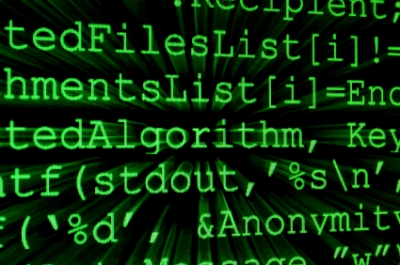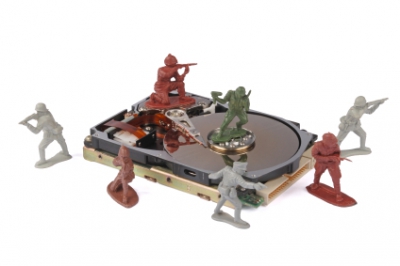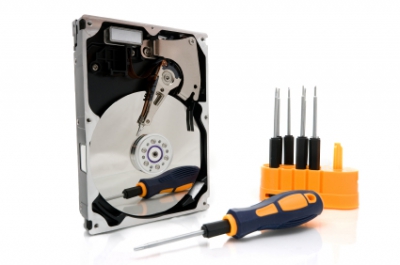- Home
- About Us
- Recovery Services Individual RecoveryEnterprise RecoveryAdditional Recovery
- Software
- Testimonials
- Locations

Data Recovery (125)
Right after the complete overwriting the most deadly to data is the physical destruction of the plates surface. Most often cause of damage is damaged heads. Recovery in this case is often impossible. We introduce our Colorado (Denver and Colorado Springs Data recovery Labs) Team topic about "Damage of the hard drive surface":
VMware is a package for virtualisation of computers. This tremendous tool is for programmers, for ordinary users wishing to examine some untypical operating system and for specialists in the data recovery. Vmware is free to download and use a trial version. There are also completely free full versions. We will demonstrate, how to start the original machine having only a binary image of hard drive (RAW format).
One of the most common (and cheapest to recover) failure of hard drives is damage of the electronics (PCB) of the HD. The most common cause of failure or burn electronics of the hard drive is damaged or poor quality power supply.
Classic modern hard drives are a very precise and complex devices. They are used in a growing number of devices that are often exposed to falls and shocks. Hard drives used in notebook computers and portable USB hard drives with the classic drive 2.5" inside rarely last longer than the warranty period due to their increasing fragility.
Below You can see Fujitsu HDD MHT2080AH opened without unscrewing all the screws. Contamination of the plate makes data recovery harder and requires non-invasive methods that we developed to remove them. Organic contaminants carried on the hands may react chemically with ferromagnetic material. Such a surface contamination significantly complicates the data recovery.
A lot of people want to know the difference between SSD and HDD and whether replacing HDD with SSD is worth the trouble. Let’s compare characteristics of HDD and SSD (form factor 2.5", interface SATA 6 Gb/s).
 A large variety of data recovery applications resurrect deleted files by several mouse clicks. This article explains the way such applications work.
A large variety of data recovery applications resurrect deleted files by several mouse clicks. This article explains the way such applications work.
How Windows stores data?
To understand how data recovery works one should know how data are stored in the hard disk and how Windows deletes these data.
Data are stored in blocks on the disk sectors. Sectors containing data may be arranged either in direct serial order (one by one) or chaotically (all over the disk platter). Sector arrangement depends on availability of empty (containing no data) sectors. If there is no available block of sectors large enough to store all data in direct serial order then the data will be fragmented into smaller parts which will be recorded to empty blocks.
To remember location of all data parts, the OS creates a special record which indicates in which sectors the data parts are stored.
 Signature-based search is the most essential algorithm used in data recovery applications. This algorithm facilitates data recovery from formatted, damaged or failed disks.
Signature-based search is the most essential algorithm used in data recovery applications. This algorithm facilitates data recovery from formatted, damaged or failed disks.
Signature-based search
Signature-based search allows applications to recover data from damaged, formatted or partitioned disks. Among tools employing this algorithm are Power Search, Content-Aware Analysis, Smart Scan, etc.
File identification
Signature-based search algorithm works similarly to antivirus software. Virus removal tool scans a file for fragments containing virus codes while signature-based search algorithm, employed by the data recovery application, scans the disk platter for sectors containing “deleted” data. File headers (signatures) contain symbols typical of only certain files. For example, JPEG files are identified by “JFIF” sequence, ZIP archives are indicated with “PK” at the beginning of the file header. PDF documents are marked with “%PDF” in the beginning of the file header.
 HDDs differ from one another by a set of features:
HDDs differ from one another by a set of features:
- Storage capacity
- Performance – data access time and read/write speed
- Interface –type of connection (IDE/EIDE/variations of SCSI)
- Other features
1. Storage capacity – amount of data which HDD can store (depends on the technology used by a manufacturer).
Typical capacity of modern hard drives is 500 – 1000 GB and more. Extra storage space is never excessive.
2. Performance depends on two main characteristics: data access time and read/write speed.
 All drives:
All drives:
If data or logical partition was accidentally deleted, or drive was formatted, etc. - do not write any data to the drive. It is recommended to turn it off, since operating system may write some information to the drive regardless of user's actions. If you are an experienced user, you may try to recover data with the help of data recovery tools, but be careful, never attempt to recover data to the same drive, use another drive to save the recovery results.
While working with external drives (USB flash, external disks, memory cards) make sure to use safe removal of device because the majority of failures occur due to improper removal of devices from the computer.
HDD (all types of hard disk drives):
Copyright © 2025 DataRecoup Recovery Services. All Rights Reserved. Designed by DataRecoup Lab.


